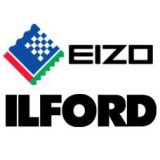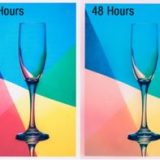Why is the quality of my prints poor?
Check the condition of the printer, is it working correctly, run a test print on a known image. Check the settings used are those recommended for the media. Check the file is of suitable size, is it over-enlarged for the data it contains?
My prints show banding – What’s the cause?
Banding can come in many forms, horizontal (direction of print head), vertical (direction of paper travel), micro, etc. In general, bands are a result of the printing mechanics failing to place the ink on the paper evenly. The type of bands you are seeing will give you clues as to what part of the mechanical printing process is failing. Horizontal banding can indicate a print head alignment problem. To cure this run the print head alignment procedure as indicated in the printer manual. It may also be due to a blocked nozzle. Try a print head clean from the printer driver. Vertical banding may be caused by the printer performance and by the environmental conditions. Banding may be indicative of too low humidity. To correct this, the humidity needs to be raised so that it falls within the media manufacturer’s specifications.
An ICC profile is a file that describes how a scanner, monitor or printer reproduces colour. These profiles are called “Device specific” profiles.
ICC stands for International Colour Consortium.
You need a profile in order to use ICC colour management. A profile can help to provide the best colour reproduction. An ICC workflow can help increase consistency.
A custom profile is a profile created on your device. The custom profile will take into account the ink, media, printer and local conditions.
What is an generic ICC profile?
A generic ICC profile describes a colour space for a printer, ink and media combination but is not specific to any one particular device. A generic ICC profile can be used in place of a custom ICC profile when a custom ICC profile is not available. The results are never as accurate as those achieved when a custom ICC profile is used.
What is the difference between water, oil and solvent based inks?
All three liquids act as a carrier of a dye or pigment onto a given substrate. The printer’s jetting system regulates the types of inks that can be used, e.g. Thermal Ink Jet- water-based only, Piezo Ink Jet- water, oil, solvent, etc.. Specific substrates are required for different inks as well; Coated- water & oil, Un-coated- solvent. ILFORD media are designed for use with aqueous (water based) inks – either dye or pigmented.
When should I use dye-based or pigment-based inks?
Dye-based inks are usually used for indoor graphics. They incorporate soluble organic colourants that produce outstanding colour saturation but are not generally waterproof and can fade quickly in direct sunlight. Pigment-based inks use insoluble colourants and are generally more light stable than dye inks. They are highly resistant to fading but, depending on the brand of inks used, may offer slightly muted colours. Pigment-based inks are highly water resistant and may last longer.
There are many factors that affect the drying of a media; amongst these are the ink load, the relative humidity, ventilation, media and ink used.
Ink load is the total amount of ink being placed at any one point on the media. For example: with 50% cyan, 40% magenta, 90% yellow, and 100% black ink on the paper, all at the same time in the same place, the ink load would be the total of these values added together, or 280%.
Ink load can be controlled by the choice of media in the printer driver. ILFORD provides recommendations for the correct media to choose. Ink load can also be changed by adjusting the original image file.
The number of variables that impact on image stability are staggering. Without specific testing under controlled conditions, it is impossible to know for sure how long any printed image will last. Even when accelerated fade tests are performed, these tests can only reveal relative comparative data. Fade tests help us to make an educated guess as to how one combination of products compares to another under a strict set of rules. The main factor in ink fading is light intensity, other causes are as follows:
- High humidity
- High temperatures
- Chemicals, such as over sprays, mounting adhesives, and self-adhesive tape.
What can I do to maximise image life?
Use a high quality ink, ILFORD test using original manufacturer’s inks. Protect the print either with a laminate, by framing or some other means. Laminate your prints with a good quality laminate.
When the prints are clean and dry. Drying time will vary depending upon ink load, media and environmental conditions. As a general rule most prints will be completely dry in 24 hours.
What happens if you laminate too soon?
The laminate may trap moisture in the image layer causing accelerated fading. In some cases the laminate may not stick to the media causing bubbles and de-lamination.
Paper should be stored in a controlled environment with 40% to 60% relative humidity at a comfortable room temperature, 15-21°C. ILFORD recommend storing unused media in its original packaging.
Are your photo papers acid free?
The term ‘acid-free’ relates to a library standard (ANSI Z39.48-1992 or ISO 11789) for uncoated paper and is used in reference to long term document storage. The term cannot be applied to resin-coated papers where the stability is mainly given by the polyethylene layers. While ILFORD RC papers meet the folding and tearing criteria of the standard, the base paper is not always alkaline. However the acidity of the paper pulp in an RC paper base does not have an impact on the long term storage of the image itself, due to the polyethylene layer in between image and paper. The inkjet receiving layer has to be slightly acidic to be compatible with inkjet inks.





